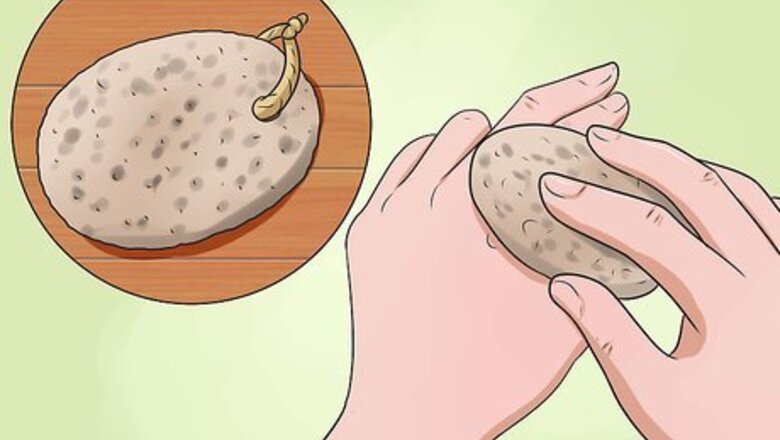
views
Using Common Home Remedies
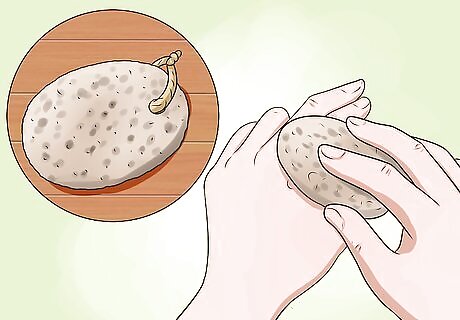
Exfoliate the wart with pumice. A quick and cost-effective way to try and remove a hand wart is to exfoliate it with a pumice stone. Pumice is naturally abrasive and works well to sand away the surface layer of the wart, especially if its covered by a thick callous Although pumice stone is effective at removing surface layers, it can't get to the deeper "roots" of the wart below the skin's surface. As such, a pumice stone should be used in conjunction with some sort of ointment to destroy the deeper parts of the hand wart. Before exfoliating your wart with pumice, soak your hand in warm water for about 15 minutes to soften the skin up. Be cautious when using pumice on smaller warts not covered by a callous. It may cause an abrasion / cut and draw blood. For smaller, more fleshy hand warts, consider using a small emery board to exfoliate it. People with diabetes or peripheral neuropathy should not exfoliate warts on their hands or feet with pumice because their reduced nerve sensations may lead to tissue damage.
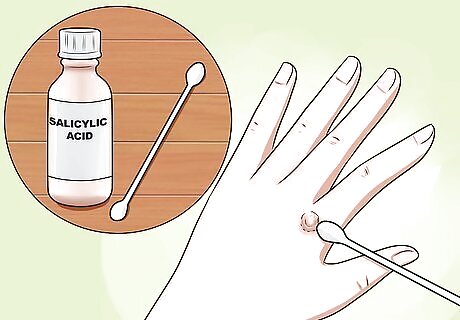
Apply salicylic acid to the wart. Another way of removing successive layers of a wart is by applying salicylic acid to it. Salicylic acid dissolves the keratin (protein) of the surface of warts and any calloused skin covering them. However, it can also damage or irritate healthy skin surrounding warts, so be careful when you apply the liquid, gel, ointment or patch — up to twice daily. Before applying salicylic acid, soak the surrounding skin and file down the surface layers of the wart with pumice or an emery board (as mentioned above) so the medication can penetrate deeper. Cover with a bandage overnight for best results. It can take many weeks to get rid of a large hand wart using salicylic acid, so be patient, Salicylic acid is an over-the-counter (OTC) wart medication widely available in most pharmacies. Some products also contain dichloroacetic or trichloroacetic acids, which help to burn the wart away. For most hand warts, a 17% salicylic acid solution or a patch at 15% strength will be effective. Remember that some hand warts disappear due to your body's immune system and don't need treatment, so playing the "wait and see" game for a few weeks is often a good idea.
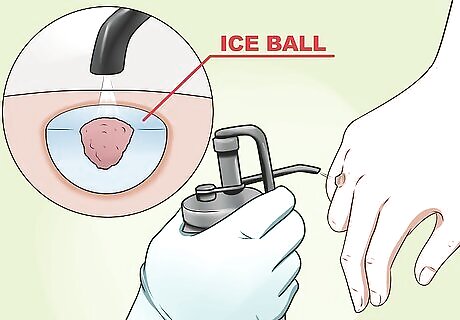
Try cryotherapy on the wart. Cryotherapy (cold therapy) involves freezing warts off. It's a common procedure for warts used by family doctors and dermatologists, but there are some effective OTC products that contain liquid nitrogen (Compound W Freeze Off, Dr. Scholl's Freeze Away) that you can use at home. Applying liquid nitrogen to a wart causes a blister to form initially, then the blister and wart fall off together after about a week. Multiple treatments are needed so the wart doesn't grow back. To make liquid nitrogen treatment more effective, file down the wart with pumice or an emery board before application. Cryotherapy can be a little bit painful, but usually it's tolerable. If the pain is severe, stop applying it and see your doctor. Liquid nitrogen can scar healthy light-colored skin or cause dark spots on dark-colored skin, so be careful when applying it. Ice and frozen gel packs are forms of cryotherapy used for musculoskeletal injuries, but don't use these methods for warts. It's not effective and it may lead to frost bite.
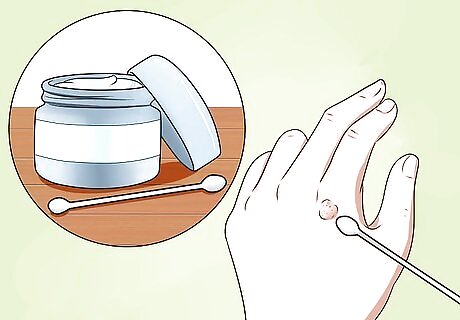
Use wart creams instead. There are many OTC creams that can help get rid of warts, and they are usually less painful than cryotherapy. They work by destroying the structure of the wart on a chemical level, ultimately breaking it down into nothing. These creams often contain dichloroacetic acid, trichloroacetic acid, 5‐fluorouracil, zinc oxide, or some type of low-dose retinoid (vitamin A derivative). Apply by rubbing the cream or ointment onto your hand wart and let it absorb for 5 minutes or so before eventually washing your hands. Use wart pads, instead. Wart pads work like wart creams do. You can apply the medication on the pad by rubbing it onto the wart directly, or you can place a small piece of wart pad over the wart and hold it in place for an hour or so using medical tape or an adhesive bandage. Retinoids are typically used to help slow down the effects of aging, but they can also be used to strip dead skin cells off your face, preventing anything from getting into your pores. This includes warts.
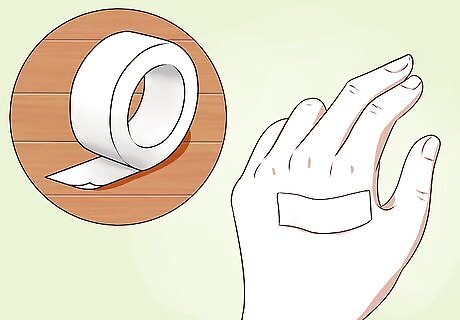
Cover the wart with duct tape. There are many reports (and some research) claiming that applying regular duct tape to warts is an effective treatment, although how it works is not entirely understood. In a 2002 study, 85% of people using duct tape were cured of their warts within a month, which happened to be more effective than using cryotherapy. So try covering your hand wart with regular duct tape, then remove it and pumice or file away the dead tissue and see if it grows back. You may need to repeat the process a couple of times, but it's worth a try given it's low cost and lack of side effects. Clean your skin with rubbing alcohol first and then securely attach a small strip of duct over your hand wart. Leave it on for 24 hours before replacing it with a fresh piece — repeat this cycle in 1 week increments for up to 6 weeks if needed. Some people people claim that other nonporous tape, such as electrical tape, works as well on warts but no research confirms this yet. Other unusual items that some people place over their warts to get rid of them include banana peels and potato skin.
Using Herbal Remedies
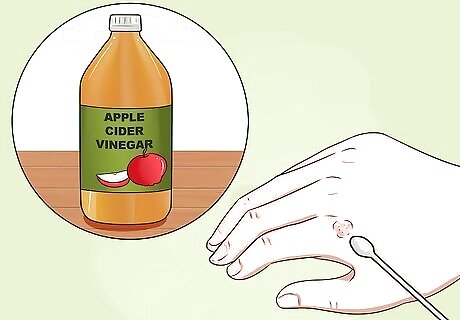
Use apple cider vinegar. Apple cider vinegar is an old home remedy used to to remove all sorts of skin blemished, including warts. The vinegar contains citric acid and also a high percentage of acetic acid, which is an antiviral (it kills HPV and some other viruses). However, citric and acetic acids can also irritate healthy skin, so be careful when applying it to your hand wart. Try soaking a cotton ball or Q-tip in vinegar and then applying it directly on top of the wart, then cover it with a bandage overnight. After about a week of daily treatment, the wart should turn darker and then fall off. New skin will soon grow in its place. Apple cider vinegar may cause mild burning or swelling in the skin around the hand wart initially, but it usually goes away quickly. Another potential downside to using apple cider vinegar is that it smells bad to most people. White vinegar consists of acetic acid also, but it doesn't seem to have the impact on warts that apple cider vinegar does.
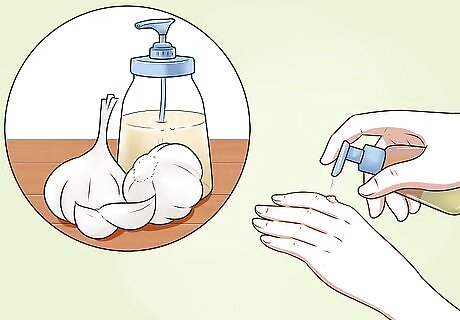
Try some garlic extract on the wart. Garlic is another old home remedy that's used for many conditions. It contains a compound called allicin, which is a strong antimicrobial that can kill a variety of microorganisms, including HPV. In a 2005 study, an extract of garlic was discovered to completely cure warts after a few weeks and there was no reappearance many months later. Raw, crushed garlic or store-bought extracts can be applied directly onto your hand wart a few times daily for 1-2 weeks. Once you apply it, cover it with a bandage for a few hours until you decide to reapply more. For best results, apply the garlic just before bedtime so the allicin can absorb deep into the wart. Like the application of apple cider vinegar, using garlic on warts may cause mild burning or swelling in the skin around your hand wart, but it usually fades away. And obviously, it also has a strong odor. As a less-effective alternative, you can take capsules of refined garlic orally (by mouth), which attacks HPV from your bloodstream.
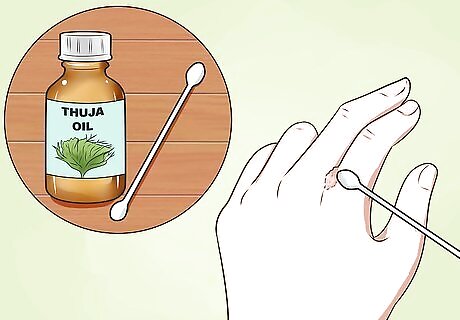
Consider using Thuja oil instead. Thuja oil is made from leaves and roots of Western Red Cedars. It's an old Ayurvedic remedy popular for many conditions because it's a strong antiviral — it contains compounds that stimulate your immune system to destroy viruses such as HPV.(it kills HPV). As such, its a good option for warts of all types. Apply Thuja oil directly onto your hand wart and allow it to absorb for about 5 minutes, then cover with a bandage. Repeat twice daily for up to 2 weeks. Thuja oil tends to be very potent and can easily irritate the surrounding skin, so be careful when applying it to your hand wart. To reduce the risk of skin irritation, try diluting the Thuja oil with some mineral or cod liver oil before applying it. Thuja oil is typically recommended for really stubborn warts that are resistant to other forms of treatments — kind of a last resort herbal remedy. Thuja is also available as homeopathic tablets, which are taken under the tongue a few times per day. The tablets are small and tasteless and have only trace amounts of Thuja extract, but they can be effective and have no known side effects.
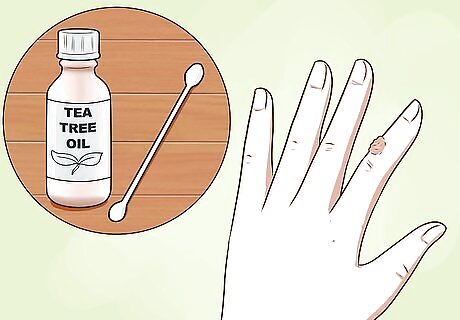
Don't forget about tea tree oil. Tea tree oil is an extract of melaleuca alternifolia, an Australian tree. It can be helpful for warts and other skin blemishes because its a strong antimicrobial and antiviral that can destroy HPV. However, tea tree oil doesn't seem to penetrate warts quite as well as apple cider vinegar, garlic extract or Thuja oil. However, tea tree oil also boosts your immune system if taken internally, which can be helpful in preventing HPV re-infection. Start with 2-3 drops of tea tree oil extract on your hand wart, 2x per day for at least 3-4 weeks and see if it helps. To make it more effective, file down the fleshy part of the hand wart with pumice or an emery board. Tea tree oil has been used for a few hundred years in Australia and New Zealand, but its only become popular in North America during the last decade or so. Tea tree oil can irritate and trigger allergic skin reactions in some sensitive people, but it's very rare.
Getting Medical Treatment

Consult with your doctor. If your hand wart doesn't go away naturally or after trying the above-mentioned home remedies, then make an appointment with your family doctor — especially if the wart is painful or located in a very inconvenient spot. Your doctor will examine your hand and make sure it's just a wart and not some other kind of skin condition. Skin problems that can mimic warts include: corns, calluses, moles, ingrown hairs, pimples, boils, seborrheic keratosis, lichen planus and squamous cell carcinoma. To make sure it's not something serious, such as skin cancer, your doctor can take a tissue sample (biopsy) of it and examine it under a microscope. If it's not a wart on your hand, your family doctor will likely refer you to a skin specialist (dermatologist) for treatment. If it is a regular wart, you doctor will likely use a form of cryotherapy (stronger than the OTC products). The doctor may have to numb the your hand before applying the liquid nitrogen. Cryotherapy, when done by your doctor, should leave no skin scars. Healthy skin grows and fills in the hole left by the destroyed wart.
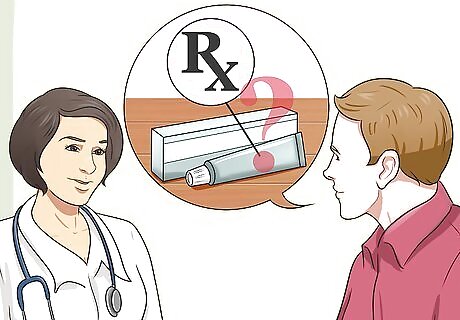
Ask about stronger prescription medication. If you or your doctor are not keen on cryotherapy, then ask about prescription topical medications — they're usually just stronger varieties of OTC creams and ointments. For example, prescription salicylic acid solution is 27.5% concentrated or higher (compared to 17% or less in OTC varieties), which makes it more effective, but also more dangerous to handle. Another common topical prescription medication applied to warts (especially plantar warts on feet) is cantharidin, a compound made from blister beetles. Cantharidin is a strong blistering agent that burns warts off. It's often used in combination with salicylic acid. Research confirms that salicylic acid is more effective when its combined with cryotherapy. Prescription salicylic acid products are sometimes given to patients to take home, but there's a much higher risk of skin irritation and scarring. Cantharidin, on the other hand, is poisonous if swallowed and not typically given to patients for home use.
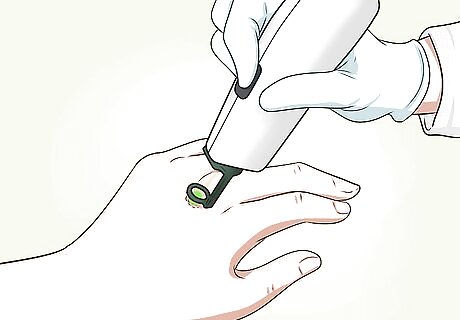
Consider laser treatments instead. Advancing technologies give doctors and dermatologists other means to get rid of skin blemishes such as warts. For example, pulsed-dye lasers can burn and destroy (or cauterize) the tiny blood vessels that surround and nourish warts, which cause them to die and flake off. Other types of more conventional lasers can burn the wart off directly within minutes, although a topical anesthetic is needed. The procedure is an outpatient one and there's usually only mild irritation to surrounding skin. Pulsed-dye laser treatments have a 95% success rate against all types of warts and they very rarely ever return. Keep in mind that laser therapy for warts and other skin conditions tends to be expensive, so check with your health insurance plan to see if you're covered. Warts on the hand are not considered a significant medical condition, so you may have to pay out of pocket for treatment.
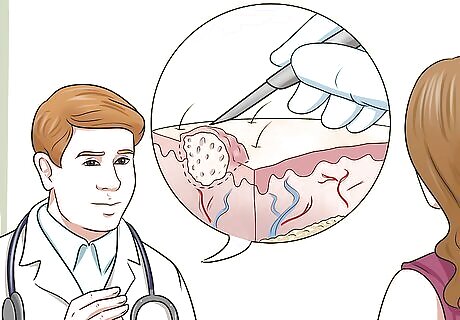
Talk to your doctor about surgery as a last resort. If home remedies and other medical treatments fail to get rid of your hand wart, then consult with your doctor about removing it surgically. Wart removal is considered minor surgery (outpatient) and involves cutting away the wart with a scalpel or destroying the tissue by using an electrical or ultrasonic device (called electrodesiccation and curettage). In essence, desiccation involves destroying the wart tissue and curettage involves scraping away the dead tissue with a metal tool called a curette. This procedure is painful, so a topical anesthetic is needed. Surgical wart removal usually leaves a scar, so keep that in mind if you're a "hand model." Following electrodesiccation, it's not unusual for warts to return within the scar tissue at a later time. Cutting into the tissue around a deep wart sometimes causes it to spread to nearby areas, particularly in people who have weak immune systems.










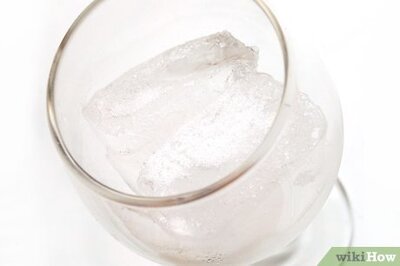


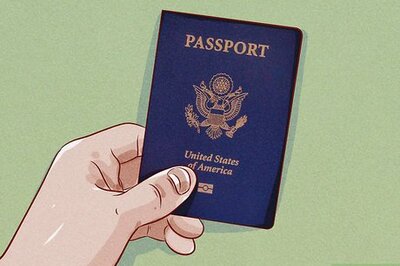
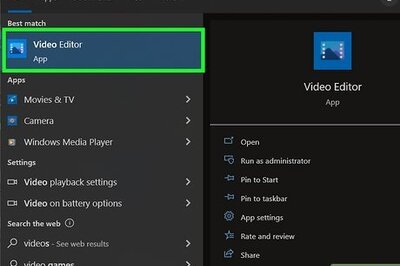

Comments
0 comment